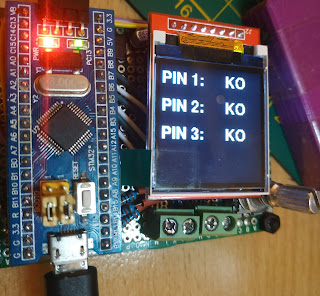GD32F103 ADC , it actually works
One problem spotted, i was abusing the STM32 without knowing it The GD32 did not like it at all The culprit is the ADON bit of the ADC CR2 register. The relevant part is that from the doc : Note:If any other bit in this register apart from ADON is changed at the same time, then conversion is not triggered. This is to prevent triggering an erroneous conversion. The trick is to setup the ADC CR2 register, wait a bit, then just toggle the ADON bit, and only that one. So, the GD32 ADC works, but the accuracy does not seems to be on par with the STM32 one. On the other hand, it can be faster by reducing the number of bits sampled. Edit : it really has only 64kB of flash!

